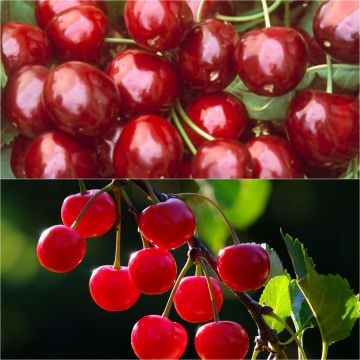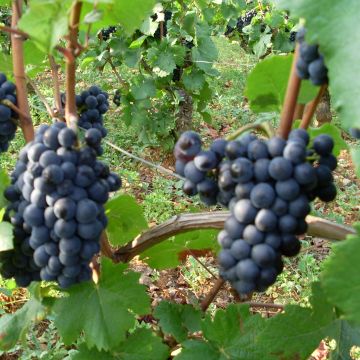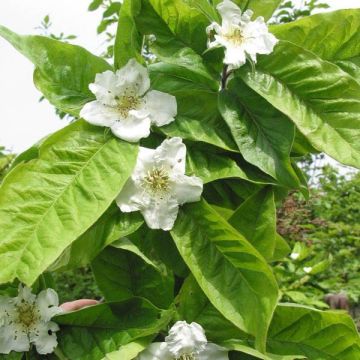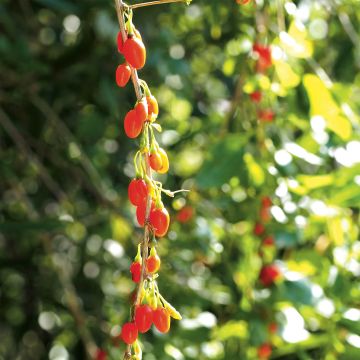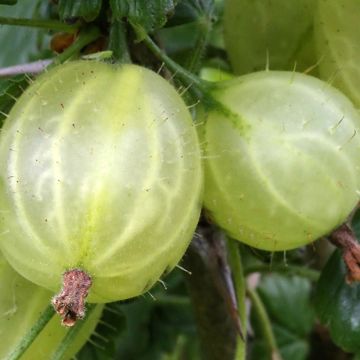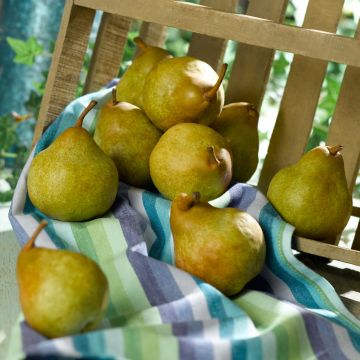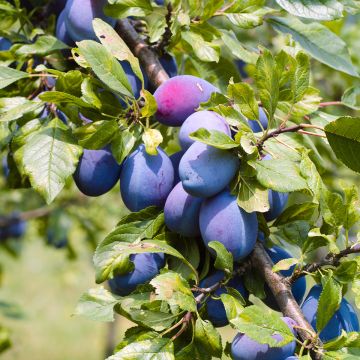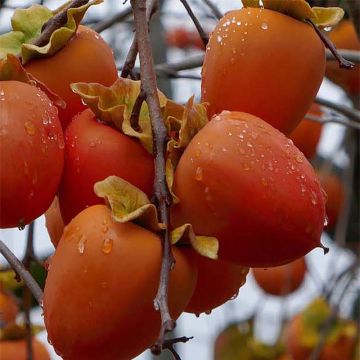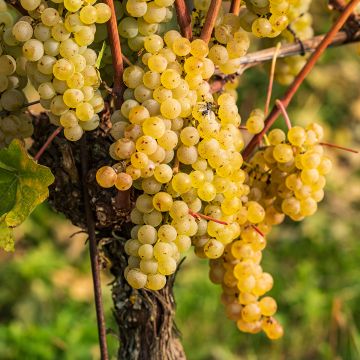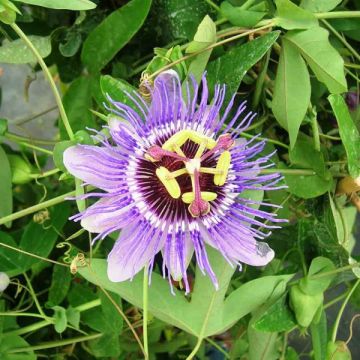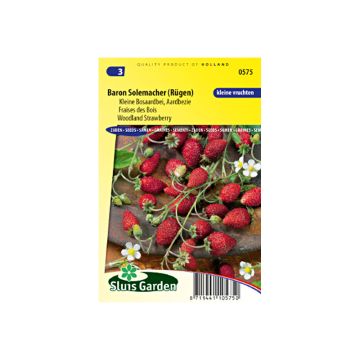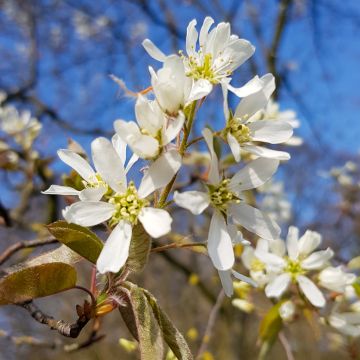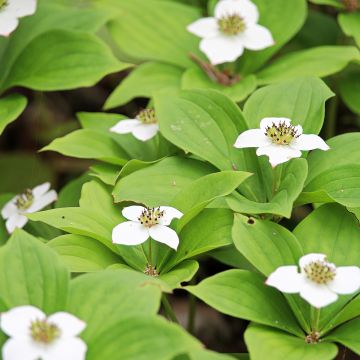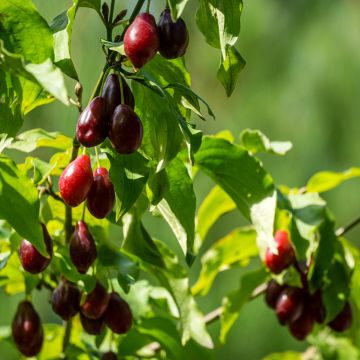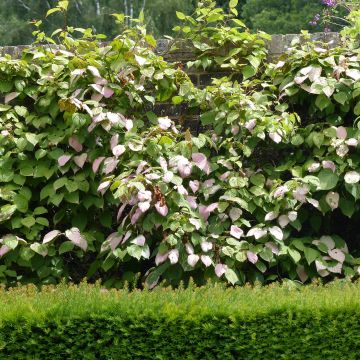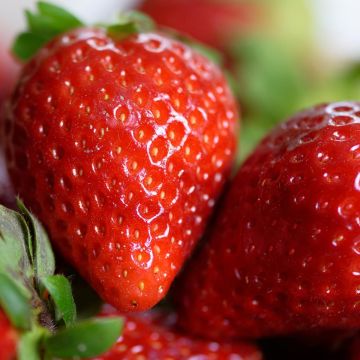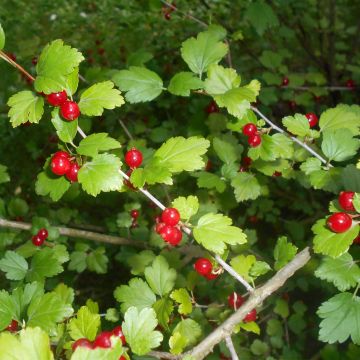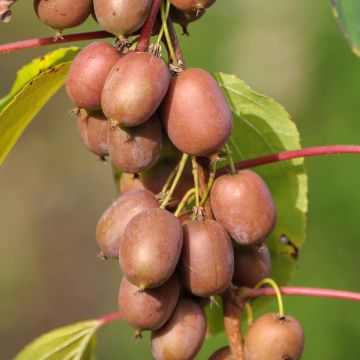

Common Hazel Fertile de Coutard - Corylus avellana
Corylus avellana Fertile de Coutard
Common hazel, European hazel
This item cannot be shipped to the selected country
Delivery charge from €5.90
More information
Schedule delivery date,
and select date in basket
This plant carries a 6 months recovery warranty
More information
We guarantee the quality of our plants for a full growing cycle, and will replace at our expense any plant that fails to recover under normal climatic and planting conditions.
From €5.90 for pickup delivery and €6.90 for home delivery
Express home delivery from €8.90.

Description
Corylus avellana Fertile de Coutard is a vigorous variety that is quite hardy and productive. It fruits quickly, bearing rounded hazelnuts with ivory-white flesh that is firm and quite fragrant. It is early but susceptible to frost. Ideally, plant it facing north to delay flowering.
The hazelnut is said to be one of the few species from the secondary era to have survived to this day. Formerly called "Coudrier," this bushy shrub can reach a height of 5m (16ft), and was associated with white magic. It is an old variety of Spanish origin.
It produces a trunk composed of a tuft of about ten branches that can reach up to 5m (16ft) in height. Its brown bark can peel off in thin strips. Its heart-shaped leaves have serrated edges and a pointed tip. The foliage is deciduous. It is monoecious, producing male flowers in the form of yellow catkins 6cm (2in) long, and condensed female flowers with upright spikes. Choose Ronde du Piémont, Negret, and Segorbe as pollinators.
Hazelnuts are generally grouped in small clusters of two or three fruits. The shell appears just before the fruit ripens. It will harden and darken while the nut concentrates sugars, oil, and minerals. Harvesting takes place at the end of August and in September, when the hazelnuts easily detach from the branches.
Hazelnuts are consumed as a dried fruit. They are also used in pastry and confectionery, grated into powder, crushed, or cut into shavings. An oil is also extracted from them, although it is prone to going off. This fruit is rich in omega 9, vitamin E, and vitamin B.
Report an error about the product description
Common Hazel Fertile de Coutard - Corylus avellana in pictures
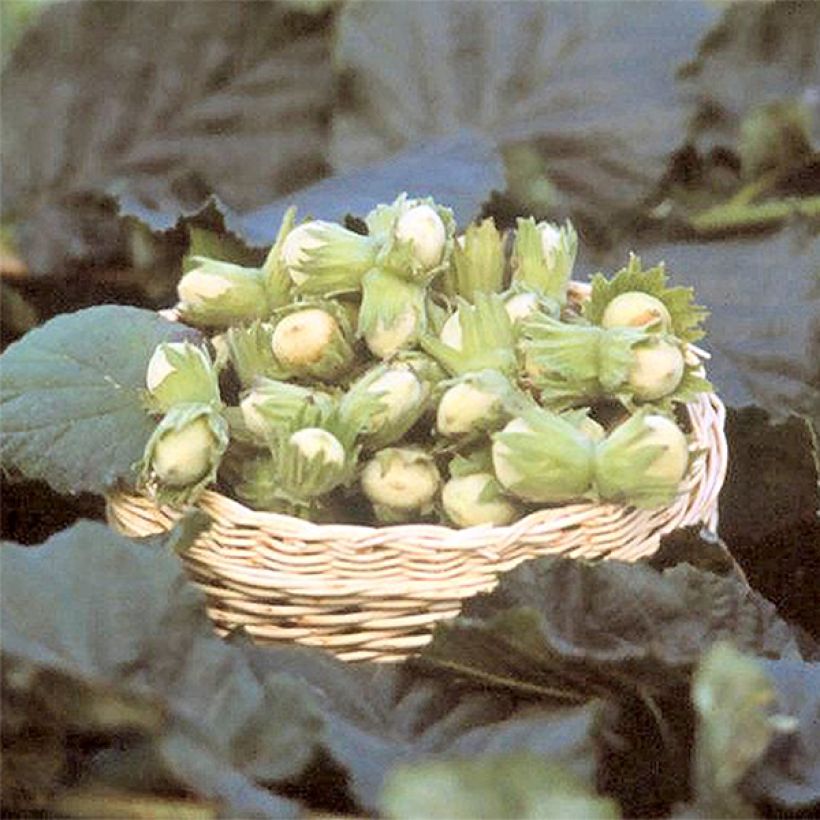

Plant habit
Fruit
Flowering
Foliage
Safety measures
Botanical data
Corylus
avellana
Fertile de Coutard
Betulaceae
Common hazel, European hazel
Cultivar or hybrid
atteinterespiratoire
Cette plante peut entraîner des symptômes allergiques.
Evitez de la planter si vous ou vos proches souffrez de rhinite saisonnière ("rhume des foins").
Davantage d'informations sur https://plantes-risque.info
Other Fruit trees A to Z
Planting and care
Plant when all risk of frost has passed. If your soil is very clayey, balance it with some gravel. Dig a hole 50 to 60cm (20 to 24in) deep and wide. Fill half of this hole with soil enriched with compost and planting soil. Place the hazelnut with the collar at ground level (which corresponds approximately to the start of the first branches), then fill the planting hole with the remaining soil. Tamp down at the base of the bush, forming a basin, and water abundantly (10 to 15 litres of water) so that the roots are in good contact with the soil.
Planting period
Intended location
Care
-
, onOrder confirmed
Reply from on Promesse de fleurs
Berries
Haven't found what you were looking for?
Hardiness is the lowest winter temperature a plant can endure without suffering serious damage or even dying. However, hardiness is affected by location (a sheltered area, such as a patio), protection (winter cover) and soil type (hardiness is improved by well-drained soil).

Photo Sharing Terms & Conditions
In order to encourage gardeners to interact and share their experiences, Promesse de fleurs offers various media enabling content to be uploaded onto its Site - in particular via the ‘Photo sharing’ module.
The User agrees to refrain from:
- Posting any content that is illegal, prejudicial, insulting, racist, inciteful to hatred, revisionist, contrary to public decency, that infringes on privacy or on the privacy rights of third parties, in particular the publicity rights of persons and goods, intellectual property rights, or the right to privacy.
- Submitting content on behalf of a third party;
- Impersonate the identity of a third party and/or publish any personal information about a third party;
In general, the User undertakes to refrain from any unethical behaviour.
All Content (in particular text, comments, files, images, photos, videos, creative works, etc.), which may be subject to property or intellectual property rights, image or other private rights, shall remain the property of the User, subject to the limited rights granted by the terms of the licence granted by Promesse de fleurs as stated below. Users are at liberty to publish or not to publish such Content on the Site, notably via the ‘Photo Sharing’ facility, and accept that this Content shall be made public and freely accessible, notably on the Internet.
Users further acknowledge, undertake to have ,and guarantee that they hold all necessary rights and permissions to publish such material on the Site, in particular with regard to the legislation in force pertaining to any privacy, property, intellectual property, image, or contractual rights, or rights of any other nature. By publishing such Content on the Site, Users acknowledge accepting full liability as publishers of the Content within the meaning of the law, and grant Promesse de fleurs, free of charge, an inclusive, worldwide licence for the said Content for the entire duration of its publication, including all reproduction, representation, up/downloading, displaying, performing, transmission, and storage rights.
Users also grant permission for their name to be linked to the Content and accept that this link may not always be made available.
By engaging in posting material, Users consent to their Content becoming automatically accessible on the Internet, in particular on other sites and/or blogs and/or web pages of the Promesse de fleurs site, including in particular social pages and the Promesse de fleurs catalogue.
Users may secure the removal of entrusted content free of charge by issuing a simple request via our contact form.
The flowering period indicated on our website applies to countries and regions located in USDA zone 8 (France, the United Kingdom, Ireland, the Netherlands, etc.)
It will vary according to where you live:
- In zones 9 to 10 (Italy, Spain, Greece, etc.), flowering will occur about 2 to 4 weeks earlier.
- In zones 6 to 7 (Germany, Poland, Slovenia, and lower mountainous regions), flowering will be delayed by 2 to 3 weeks.
- In zone 5 (Central Europe, Scandinavia), blooming will be delayed by 3 to 5 weeks.
In temperate climates, pruning of spring-flowering shrubs (forsythia, spireas, etc.) should be done just after flowering.
Pruning of summer-flowering shrubs (Indian Lilac, Perovskia, etc.) can be done in winter or spring.
In cold regions as well as with frost-sensitive plants, avoid pruning too early when severe frosts may still occur.
The planting period indicated on our website applies to countries and regions located in USDA zone 8 (France, United Kingdom, Ireland, Netherlands).
It will vary according to where you live:
- In Mediterranean zones (Marseille, Madrid, Milan, etc.), autumn and winter are the best planting periods.
- In continental zones (Strasbourg, Munich, Vienna, etc.), delay planting by 2 to 3 weeks in spring and bring it forward by 2 to 4 weeks in autumn.
- In mountainous regions (the Alps, Pyrenees, Carpathians, etc.), it is best to plant in late spring (May-June) or late summer (August-September).
The harvesting period indicated on our website applies to countries and regions in USDA zone 8 (France, England, Ireland, the Netherlands).
In colder areas (Scandinavia, Poland, Austria...) fruit and vegetable harvests are likely to be delayed by 3-4 weeks.
In warmer areas (Italy, Spain, Greece, etc.), harvesting will probably take place earlier, depending on weather conditions.
The sowing periods indicated on our website apply to countries and regions within USDA Zone 8 (France, UK, Ireland, Netherlands).
In colder areas (Scandinavia, Poland, Austria...), delay any outdoor sowing by 3-4 weeks, or sow under glass.
In warmer climes (Italy, Spain, Greece, etc.), bring outdoor sowing forward by a few weeks.

































